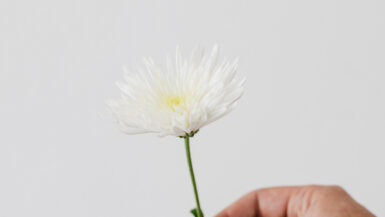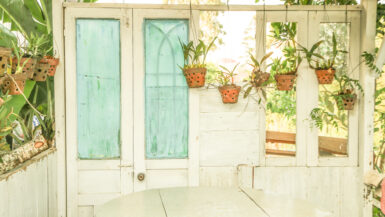Indoor vertical gardening has revolutionized how we grow plants within limited spaces, providing numerous benefits such as improved air quality, enhanced aesthetics, and increased crop yields. However, to ensure the success of these green oases, it is vital to address specific challenges unique to vertical gardens.
Among these challenges, proper drainage is a critical factor that can significantly impact the health and productivity of your plants. This article will delve into the importance of adequate drainage in indoor vertical gardens, exploring its role in maintaining optimal plant growth, preventing root rot, and avoiding structural damage to your gardening setup. By understanding the intricacies of an efficient drainage system, you can cultivate a thriving and sustainable indoor vertical garden for years to come.
Watering Techniques for Indoor Vertical Gardens
While proper drainage is crucial for maintaining a healthy indoor vertical garden, it is equally important to develop an efficient watering system that caters to your plants’ unique requirements. This section will discuss various watering techniques employed in indoor vertical gardens, highlighting their benefits and drawbacks to help you select the optimal method for your green haven. Furthermore, we will also touch upon the importance of choosing the proper containers, which play a vital role in facilitating drainage and supporting the overall health of your garden.
Manual Watering: The Classic Approach
Manual watering is the simplest and most traditional indoor vertical garden method. This technique entails using a watering can, hose, or spray bottle to directly water your plants, allowing you to control the amount of water each plant receives. While manual watering provides a high level of control, it can be labor-intensive and time-consuming, especially for more extensive vertical gardens. Additionally, if not performed carefully, it may lead to uneven watering and inadequate drainage.
Self-Watering Containers: A Convenient Solution
Self-watering containers are an innovative solution that simplifies watering and ensures proper drainage. These containers feature a reservoir that holds water, which is gradually absorbed by the plants’ roots through a wicking system. This method not only reduces the frequency of watering but also promotes consistent moisture levels and optimal drainage. To learn more about selecting the perfect indoor vertical garden containers, visit our guide on choosing the correct container for your vertical garden setup.
Drip Irrigation Systems: Precision and Efficiency
Drip irrigation systems are becoming increasingly popular in indoor vertical gardens due to their precision and efficiency. These systems utilize a network of tubes and emitters to deliver water directly to the root zone of each plant, ensuring consistent moisture levels and preventing overwatering. Drip systems can be customized to accommodate the specific needs of your plants and can be automated, reducing the time and effort required to maintain your garden. However, a drip irrigation system’s initial setup and maintenance can be complex and may require professional assistance.
Capillary Mats: Consistent Moisture for Smaller Gardens
Capillary mats are designed for smaller indoor vertical gardens and work by evenly distributing water to plant containers through capillary action. These mats are placed beneath the containers, filled with a porous growing medium. The mat absorbs water and transfers it to the roots of the plants, ensuring consistent moisture levels and promoting proper drainage. While capillary mats are easy to install and maintain, they may not be suitable for larger vertical gardens or plants with extensive root systems.
By carefully considering the abovementioned watering techniques, you can create a tailored approach to maintaining your indoor vertical garden, ensuring optimal plant growth and health. Moreover, by combining these watering methods with proper drainage, you can cultivate a flourishing green space that thrives in your indoor environment.
Types of Growing Mediums for Optimal Drainage
Selecting the right growing medium is crucial for ensuring proper drainage in indoor vertical gardens, as it directly affects the retention and distribution of water and nutrients to your plants. In this subsection, we will explore a variety of growing mediums suited for indoor vertical gardening, detailing their characteristics and discussing how they contribute to optimal drainage. By understanding the properties of these different growing mediums, you can make an informed decision when choosing the ideal medium for your indoor vertical garden.
Coconut Coir: A Sustainable and Versatile Option
Coconut coir, made from the fibrous husks of coconuts, has become a popular choice for indoor vertical gardeners due to its sustainability and versatility. This medium is lightweight, perfect for vertical installations, and provides excellent water retention and drainage. Additionally, coconut coir is resistant to fungal growth and pests, ensuring a healthy environment for your plants.
Peat Moss: A Classic Choice with Excellent Water Retention
Peat moss, derived from decomposed sphagnum moss, is a classic choice for indoor gardening due to its exceptional water retention capabilities. It is lightweight and has a slightly acidic pH level, making it ideal for many plants. However, peat moss can compact over time, reducing its drainage capacity. To address this issue, consider mixing it with other mediums like perlite or vermiculite to improve aeration and drainage.
Perlite: A Lightweight and Porous Alternative
Perlite, a heated and expanded volcanic rock, is a lightweight and porous medium that excels at facilitating drainage and aeration. Due to its low water retention capacity, it is often mixed with other growing mediums like peat moss or coconut coir to provide a balanced environment for plant growth. Using perlite in your indoor vertical garden can help prevent overwatering and promote healthy root development.
Vermiculite: Superior Water Retention and Nutrient Delivery
Vermiculite, a mineral that expands when heated, is another excellent medium for indoor vertical gardening. It has a high water retention capacity, making it suitable for plants that require consistent moisture. Moreover, vermiculite can hold nutrients, gradually releasing them to the plant’s roots. Like perlite, it is often blended with other mediums to create an ideal water retention and drainage balance.
Expanded Clay Pebbles: A Drainage-Focused Solution
Expanded clay pebbles, or hydroton or LECA, are popular for hydroponic indoor vertical gardens. These pebbles are lightweight and reusable and provide excellent drainage and aeration, making them perfect for plants susceptible to root rot. However, they do not retain water like other mediums, so they may not be suitable for all plant types.
By evaluating the various growing mediums presented above, you can identify the optimal choice for your indoor vertical garden, ensuring proper drainage and promoting healthy plant growth. Remember that each medium has unique characteristics, and it is essential to consider your plants’ specific needs and your garden setup when selecting.
Preventing Root Rot and Fungal Diseases
Proper drainage in indoor vertical gardens plays a crucial role in preventing root rot and fungal diseases, both of which can significantly affect plant health and yield. By ensuring that excess water is efficiently removed from the root zone, you can create an environment that promotes healthy plant growth while minimizing the risks associated with overwatering. This subsection will discuss various strategies to prevent root rot and fungal diseases, focusing on the importance of proper drainage, suitable growing mediums, and effective watering techniques.
Maintaining Optimal Moisture Levels
One of the primary factors contributing to root rot and fungal diseases is excessive moisture around plant roots. When the growing medium remains consistently saturated, it can lead to a lack of oxygen, ultimately causing roots to rot and become susceptible to fungal infections. To prevent this issue, ensure that your indoor vertical garden has a well-designed drainage system that removes excess water, allowing the roots to access sufficient oxygen.
Choosing the Right-Growing Medium
As discussed earlier, selecting a suitable growing medium facilitates proper drainage and prevents root rot. Opt for a medium that provides the ideal water retention and drainage balance, such as a mix of coconut coir, peat moss, perlite, or vermiculite. This will ensure your plants receive adequate moisture while preventing the growing medium from becoming overly saturated.
Implementing Effective Watering Techniques
In addition to proper drainage and suitable growing mediums, effective watering techniques that cater to your plant’s specific needs are vital. Overwatering can lead to root rot and increase the risk of fungal diseases, so finding a balance between providing sufficient moisture and avoiding excessive wetness is crucial. Monitor your plants closely and adjust your watering schedule as needed, considering factors such as humidity, temperature, and the water requirements of each plant species.
Regularly Inspecting and Treating Your Plants
To prevent root rot and fungal diseases, inspecting your indoor vertical garden regularly for signs of problems is essential. Look for yellowing leaves, wilting, and stunted growth, as these can indicate root issues or fungal infections. If you suspect a problem, remove the affected plants from the garden to prevent the spread of disease and treat them with appropriate fungicides or other remedies as needed.
Proper Ventilation and Air Circulation
Fungal diseases often thrive in damp, stagnant conditions, so adequate ventilation and air circulation in your indoor vertical garden can be an effective preventative measure. Utilize fans or open windows to increase air movement, helping to reduce humidity and prevent moisture buildup on plant leaves and stems. This can significantly reduce the risk of fungal diseases taking hold in your garden.
Focusing on these strategies can help you maintain a healthy and productive indoor vertical garden free from the detrimental effects of root rot and fungal diseases. Remember that prevention is key, and by ensuring proper drainage, selecting suitable growing mediums, employing effective watering techniques, and regularly monitoring your plants, you can cultivate a thriving and resilient green space within your indoor environment.
Understanding Indoor Vertical Garden Drainage Systems
A well-designed drainage system is the backbone of any successful indoor vertical garden, facilitating the removal of excess water and ensuring optimal plant health. In this subsection, we will dissect the various components and types of drainage systems that can be implemented in indoor vertical gardens, providing an in-depth understanding of their function and importance. By familiarizing yourself with these systems, you can make informed decisions when designing and maintaining your vertical garden, ultimately contributing to its overall success and longevity.
Key Components of an Efficient Drainage System
The primary function of a drainage system is to direct excess water away from the roots of your plants, preventing overwatering and promoting a healthy growing environment. To achieve this, a drainage system typically consists of the following components:
1. Drainage Holes: These are small openings at the bottom of your plant containers that allow excess water to escape. Drainage holes are essential for preventing waterlogged soil and root rot and ensuring that your plants receive adequate oxygen and nutrients.
2. Drainage Trays: Positioned below the plant containers, drainage trays collect the excess water that flows through the drainage holes. This prevents water from pooling on the floor or damaging nearby surfaces, making it crucial for maintaining a clean and functional indoor vertical garden.
3. Evaporation and Reuse: In some advanced drainage systems, excess water is collected, evaporated, and reused to irrigate the plants, promoting water conservation and reducing waste. This closed-loop approach can be particularly beneficial in areas with limited water resources or for gardeners who are concerned about sustainability.
Types of Drainage Systems for Indoor Vertical Gardens
Several types of drainage systems can be employed in indoor vertical gardens, each with unique benefits and drawbacks. The choice of a drainage system will largely depend on the size of your garden, the types of plants you are growing, and your individual preferences. Below, we will explore some of the most common drainage systems used in indoor vertical gardens:
1. Gravity-Based Drainage: This simple, cost-effective system relies on gravity to direct excess water from plant containers to drainage trays. While it requires minimal setup and maintenance, gravity-based drainage systems may not be suitable for more extensive vertical gardens or those with complex layouts.
2. Wick Drainage: In wick drainage systems, wicks made from absorbent materials such as cotton or polyester are placed in the bottom of the plant containers, drawing excess water away from the roots and into the drainage trays. This method is particularly effective for smaller vertical gardens or plants requiring consistent moisture levels.
3. Sub-Irrigation Drainage: Sub-irrigation systems, such as the ones used in self-watering containers, feature a water reservoir that provides moisture to the roots of your plants via a wicking system. Excess water is then drained back into the reservoir, creating a closed-loop system that minimizes waste and ensures proper drainage. This method is ideal for gardeners looking for a low-maintenance and water-efficient solution.
4. Recirculating Drainage: In recirculating drainage systems, excess water is collected, filtered, and redistributed to the plants through a pump and tubing network. This method is highly efficient, conserving water and ensuring consistent moisture levels throughout the garden. However, a recirculating system’s initial setup and maintenance can be more complex and may require professional assistance.
Maintenance Tips for Efficient Indoor Vertical Garden Drainage
Maintaining an efficient drainage system is crucial for your indoor vertical garden’s long-term success and health. In this subsection, we will provide practical maintenance tips to ensure your drainage system effectively prevents overwatering and promotes optimal plant growth. By implementing these strategies, you can secure the longevity and vitality of your green oasis.
Regularly Inspect and Clean Drainage Holes
Drainage holes are essential for allowing excess water to escape from your plant containers. It is crucial to inspect these holes regularly, ensuring that they are not blocked by soil, debris, or roots. Blocked drainage holes can lead to waterlogging and root rot, compromising the health of your plants. Also, clean the drainage holes as needed to maintain efficiency and prevent potential issues.
Monitor Water Collection and Evaporation Rates
Keep a close eye on the amount of water collected in your drainage trays, as this can provide valuable insights into the effectiveness of your drainage system. If you notice excessive water accumulation, it may indicate poor drainage or overwatering, necessitating adjustments to your watering schedule or system. Moreover, monitoring the evaporation rate of collected water can help you maintain proper humidity levels within your indoor vertical garden.
Periodically Replace or Refresh Growing Mediums
Over time, growing mediums can become compacted or lose their ability to facilitate proper drainage. To address this issue, periodically refresh or replace your growing medium to ensure it continues to provide the ideal balance of water retention and drainage. This will help maintain a healthy root environment and promote optimal plant growth.
Test and Adjust Watering Techniques
Different plants have unique watering requirements, and tailoring your watering techniques to suit their needs is essential. Regularly test and adjust your watering methods to ensure they provide adequate moisture without causing waterlogging or root rot. Additionally, consider using moisture meters to monitor the moisture content of your growing medium and make informed decisions about your watering schedule.
Inspect and Maintain Irrigation Systems
If you are using a drip irrigation or recirculating drainage system, it is essential to inspect and maintain the components regularly to ensure they continue to function efficiently. Check for leaks, clogs, or damage to the tubing, emitters, and pumps, and address any issues promptly to prevent potential problems. Regular maintenance will help prolong the life of your irrigation system and contribute to the overall health of your indoor vertical garden.
Ensure Proper Ventilation and Air Circulation
As mentioned earlier, adequate ventilation and air circulation prevent fungal diseases and maintain proper humidity levels within your indoor vertical garden. Ensuring your garden receives sufficient airflow can help promote efficient evaporation of excess moisture and maintain a healthy environment for your plants.
By following these maintenance tips for indoor vertical garden drainage, you can safeguard the efficiency of your indoor vertical garden’s drainage system, preventing issues such as root rot and fungal diseases. Regular monitoring, cleaning, and adjusting can create a thriving and sustainable green space that flourishes within your indoor environment.







Leave a reply